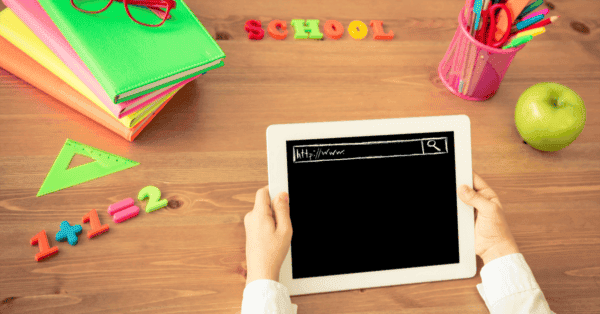Tracey is full-time writer and editor at www.packthepjs.com


In light of the recent government guidance of the closing of all schools across the UK, everyone is affected by this news in some shape or form. We give insight to a parent who is learning to cope with this new normal.
In Tracey Kifford’s case, you turn your dining room into an improvised classroom. From this week, Tracey’s two children, Millie-Mae (13) and Toby (11) will be keeping up with their education at home.
Both children have a desktop PC, which has been moved to the dining table. Tracey and her husband will also be working from the makeshift office/schoolroom. “It means we will all be concentrating at the same time,” explains Tracey.
Tracey has created a daily timetable which means the family walks the dog first thing, before having breakfast together. Work then starts at 9am until 11am, followed by a break, then work until 1pm. “After lunch my husband Huw will keep working, while I entertain the children,” says Tracey. “We’re planning to do hands-on learning in the afternoon, like baking, gardening and some easy DIY.”
In the evenings, there will another dog walk before the kids are let loose with screen time until just before bedtime. “For me, the success so far has been seeing the children doing schoolwork. It’s realising what they struggle with and where they excel”.
I’ve been able to pinpoint some areas that need work, and we do a little of this each day. Another win of the situation is that the DIY jobs are gradually getting done!” says Tracey.
That said, it is challenging when the children want to go out to play. “Their closest friends are currently self-isolating, so it’s a definite no-no,” says Tracey.
“They are on their mobiles a lot of the time, on WhatsApp mostly, and it’s sometimes tricky to get them to focus on schoolwork. But so long as the work is done, I’m giving them that freedom.”
Technology has been crucial to the family settling into a new routine. The school sends children work via ‘Show My Homework’, which is checked each morning. Both children use PCs to do their homework, whether it’s writing a story or building a presentation. “Toby is doing lots of SATs tests, even though I know the SATs won’t happen,” adds Tracey.
The family is balancing tech time with practical activities each afternoon, and the “work” side of tech is balanced with gaming and social time online in the late afternoons and evenings.
“My children are big tech users anyway, so they’re addicted to it sometimes.
What we’re trying to do now is use tech at the same times, then walk away and do something else.”
Have a timetable but make it realistic and don’t expect children to do a full day’s schoolwork. “I think it’s best to mix everything up, so there’s some schoolwork, some exercises, some time to chat with friends on phones, or play games and watch YouTube,” she says.
“The main benefit of the technology to me is that they can communicate with their friends, I’d worry about them getting depressed if they couldn’t do that,” Tracey adds.
On the whole, Tracey has been pleased with how her children’s school has adapted to online learning. “They set homework and mark it, and teachers are available on email to chat when needed,” she says.
“As parents, we’ve found new uses and resources, like streaming yoga classes to our large screen TV via YouTube. We’re going to try a Zumba class tomorrow!”
Tracey is full-time writer and editor at www.packthepjs.com
